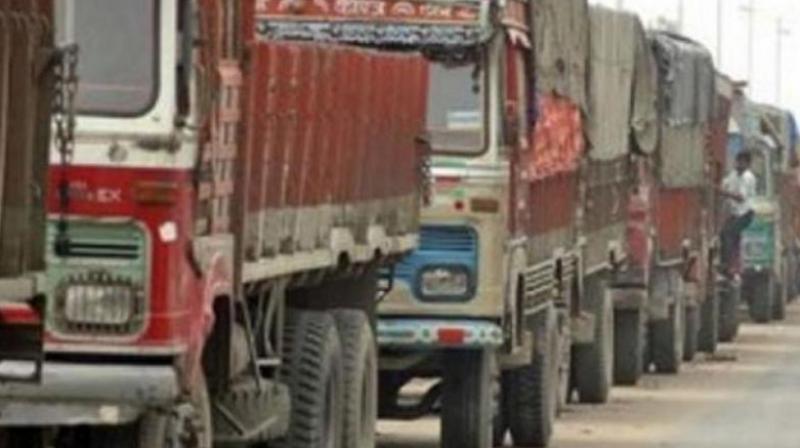How transportation can be single most impactful factor for a greener supply chain
The transport sector alone contributes to about a quarter of global CO2 emissions.

Logistics and Supply chain plays an important role in the growth of businesses, making it one of the key pillars for economic health and prosperity of a country. Logistics and Supply chain are also the largest contributors to environmental pollution, having a devastating impact on the ecology. India’s poor Environmental Performance Index, which slipped from 141/180 in 2016 to 177/180 in 2018, is a loud warning sign for the logistics sector to urgently adopt sustainable practices so as to remain globally relevant.
As one of the major contributors to environmental degradation, the transport sector alone contributes to about a quarter of global CO2 emissions. In India, the CO2 emission from fossil fuels has also grown at CAGR of 4.5 per cent, as compared to the 1.16 per cent growth in developed countries. Apart from CO2 emission, transportation also contributes to 30 per cent of particulate matter in the air in metros, leading to air pollution and noise pollution. Further, with the fast-paced infrastructure developments have taken up around ports and for the creation of specialised logistic parks etc., there is massive degradation of green cover and open spaces, with trees being chopped off to make way for expressways, warehouses, and larger ports.
Adoption of Green Transportation can help to not only arrest the air and noise pollution, but will also help conserve the fast depleting fossil fuels. Replacing the conventional fuels with bio-fuel based alternatives like CNG, hybrid, battery-operated vehicles, and equipment, etc., can be a start. Additionally, by strategically planning their transportation by taking into account details like fuel efficiency, payload management, routing, and driving techniques etc., logistics service providers can enjoy cost-effective and leaner operations, while also making a ‘green transportation’ choice.
Another key shift, when opting for a greener transport chain, is to replace the high fuel consuming modes like air freight and road transport with more energy efficient means like railways and waterways. While these are relatively more time-consuming, effective planning and coordination can ensure a larger percentage of transport is carried out through these ‘greener’ methods, with air and road transport used sparingly, and only in case of smaller distances or for emergencies.
Effective freight management is another key area that can help cut down on pollutants and environmentally harmful methods of transport. With the advent of smarter, technology-enabled logistics services, more and more organised players are offering integrated solutions to create a more cost-effective and efficient supply chain. These methods, when adopted regularly and effectively, also go a long way in reducing carbon footprint and creating a sustainable network of freight movement.
Forecasting, for example, allows efficient mapping of shipments patterns, where one can derive valuable information with respect to frequent destinations frequently used international freight forwarders, transport mode, average delivery times, average freight costs per shipment, weight/ volume of shipments, and type of material. This significantly helps in not just acquiring lower rates for all future shipments but also brings about an accurate pattern which can help navigate through avoidable errors. It also helps to effectively predict and control fuel consumption, draw out the best and fastest routes, replace certain road transport with railways etc., thus adding the essential ‘sustainable’ approach to the process.
Consolidation of freight is another essential factor that can help arrest pollution and environmental damage. Frequent and un-planned shipments can prove expensive, time-consuming and devastating for the environment. Consolidation of shipments through a well-planned approach can assist in not just reduction of cost but also valuable time and effort. For example, the free flow of goods across the European Union can be leveraged to create a centralised hub for shipping to international destinations. Shipments from all over the continent can be clubbed together basis their destination and shipped from a single port, thus creating an organised logistics system. This consolidation can help reduce the time, documentation (which involves a lot of paperwork), and cost while also allowing economical and intelligent use of natural resources, leading to a greener freight movement.
Apart from the above-mentioned aspects of transportation, Warehousing and Packaging are key contributors to environmental hazards and can be effectively addressed to attain a sustainable supply chain. By adopting pre-engineered steel structures and LEED-certified green buildings for warehouses, instead of the traditional concrete buildings, can help optimize energy consumption and creates a smarter layout for easy operations. Further, by adopting alternative energy sources like solar panels for lighting or the energy-efficient lighting sources, recycling water and installation of automated systems that check energy utilization etc., modern logistics providers can go ‘green’ and create cost-effective and sustainable warehousing operations.
Packaging and Recycling of Waste is another significant part of warehousing processes, which is a major contributor to environmental hazards, especially with the rise in e-commerce. Green Packaging and Waste Recycling can contribute manifolds in creating a Green Supply Chain by implementing efficient packaging that is optimal, weighs less and thus is easier to transport. Replacing plastic packaging with a bio-degradable material like paper and cardboard can be the next vital transition.

